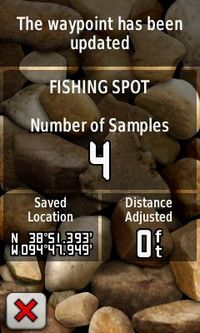Traditional Short-term averaging involves averaging a location over a few minutes. This technique removes large temporary errors in GPS position and is most beneficial when conditions are challenging (such as dense tree cover) but can not mitigate errors from the current satellite constellation. For best results in difficult conditions, our research found short-term averaging should be done for at least 5 minutes, preferably 7 to 10 minutes. Oregonís application indicates how long it recommends averaging based on current conditions. Multi-sample averaging involves returning multiple times to collect short-term average samples, mitigating errors from the current satellite constellation and allowing a waypoint to converge to ground truth as additional samples are added. For multi-sample averaging, our research uncovered two important factors in achieving the greatest error reduction: the number of samples collected and the elapsed time between samples. For optimal results, at least 4-8 samples should be collected spaced at least 90 minutes apart (allowing the satellite constellation sufficient time to change). |
 |
 |

We recently completed detailed research on various waypoint averaging techniques and their respective benefits. Our research culminated in an improved multi-sample averaging technique which outperforms the traditional short-term averaging. The first implementation offering the multi-sample technique is offered as a new application on our Oregon platform.